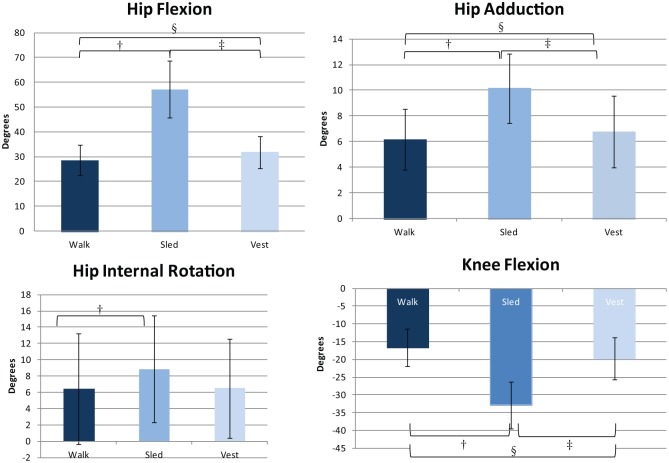Figure 5.
Knee and hip kinematics illustrate task differences for men, with data collapsed for limb. †Significant difference between walk and sled tasks: peak hip flexion (mean difference [x], –29.135; P < 0.001; 95% CI, −34.617 to −23.653), hip adduction (x, −3.971; P < 0.001; 95% CI, −5.172 to −2.771), hip internal rotation (x, −2.462; P = 0.027; 95% CI, −4.602 to −0.321), and knee flexion (x, 16.173; P < 0.001; 95% CI, 13.139 to 19.208) angles. §Significant difference between walk and vest tasks: peak hip flexion (x, −3.769; P = 0.001; 95% CI, −5.657 to −1.880), hip adduction (x, −0.576; P = 0.006; 95% CI, −0.954 to −0.198), and knee flexion (x, 3.067; P = 0.002; 95% CI, 1.394 to 4.739) angles. ‡Significant difference between sled and vest tasks: peak hip flexion (x, 25.367; P < 0.001; 95% CI, 20.407 to 30.326), hip adduction (x, 3.395; P < 0.001; 95% CI, 2.098 to 4.692), and knee flexion (x, −13.106; P < 0.001; 95% CI, −16.797 to −9.416) angles.

